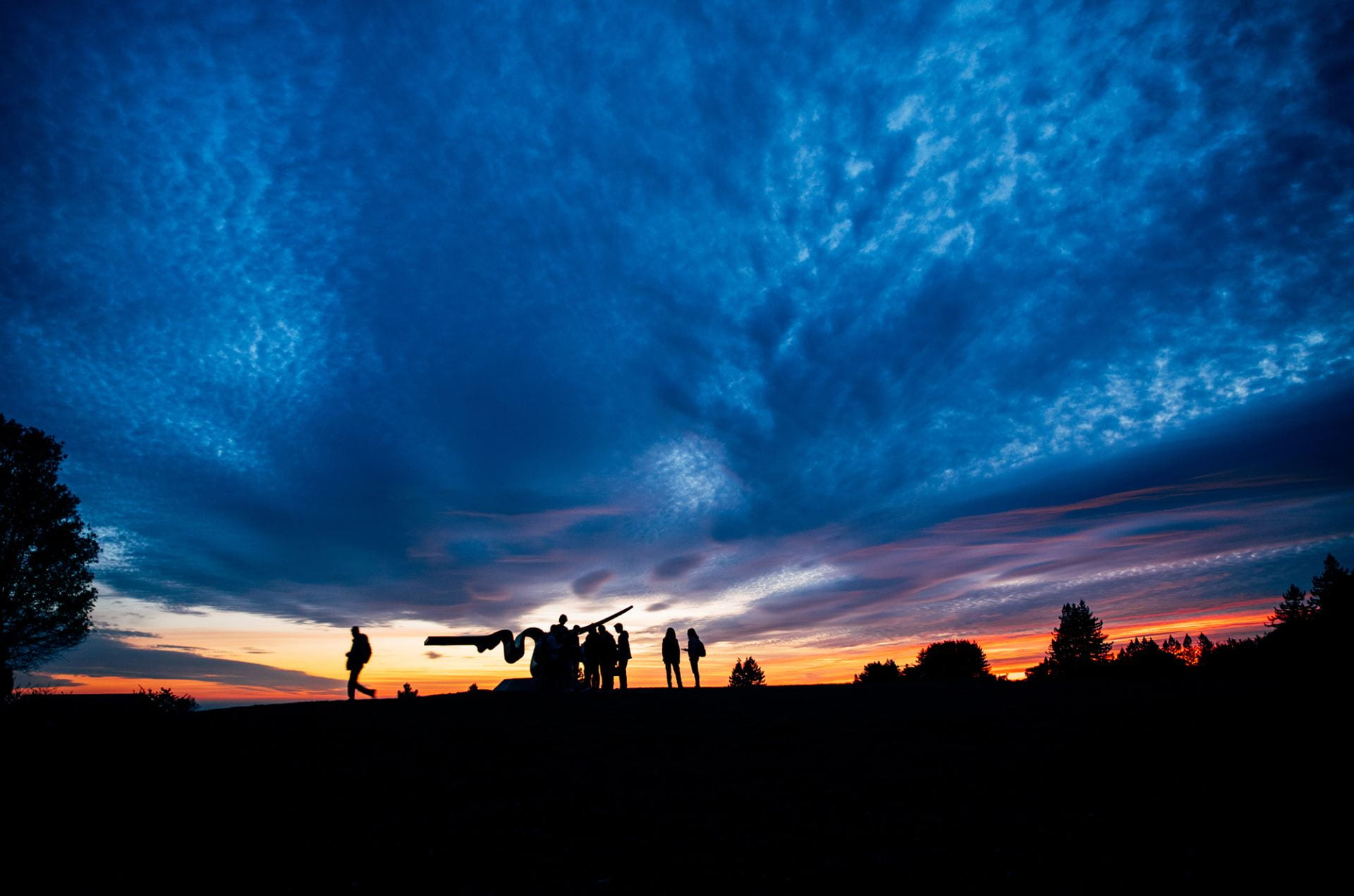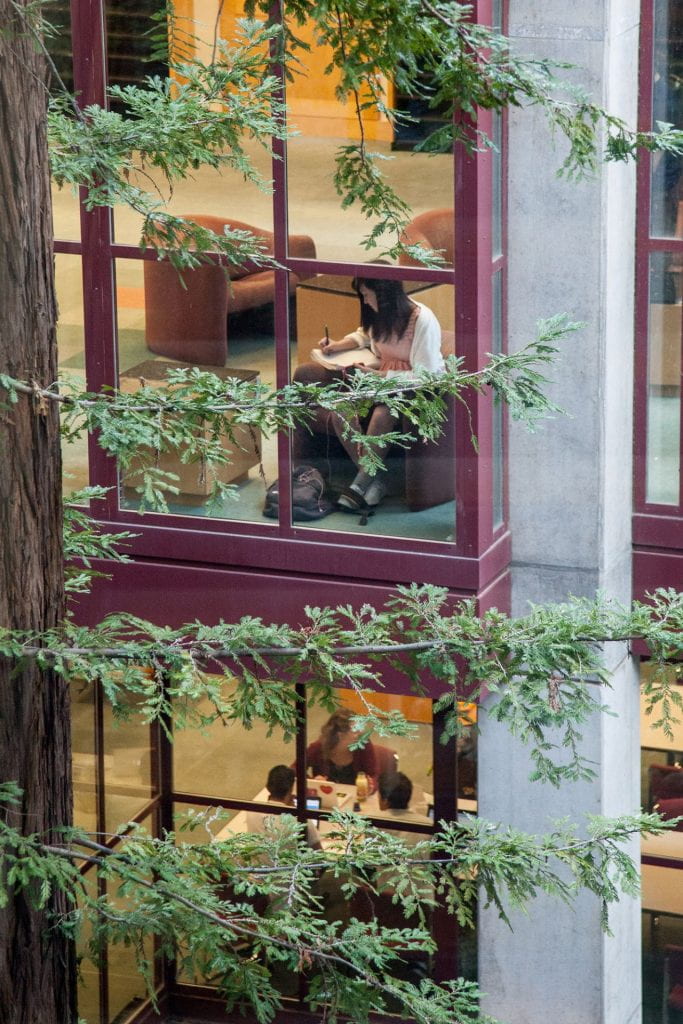
Unparalleled Undergraduate Student Education and Experience
Committee members
Akirah Bradley-Armstrong, Vice Chancellor, Student Affairs and Success, co-chair
Sean Keilen, Professor of Literature, Provost of Porter College and Chair of the Council of College Provosts, co-chair
Elizabeth Abrams, Provost, Merrill College
Peter Alvaro, Associate Professor, Computer Science and Engineering
Alex Belisario, Executive Director, College Student Life & Senior Director, College Student Life—Crown and Merrill Colleges
Nandini Bhattacharya, Associate Director of Teaching, Teaching and Learning Center
micha cárdenas, Associate Chair and Associate Professor of Performance, Play and Design; Associate Professor Critical Race and Ethnic Studies
Melanie Douglas, Deputy Chief Information Officer and Associate Vice Chancellor, Technology & Services
Judith Estrada, Assistant Vice Chancellor, Office for Diversity, Equity and Inclusion
Sheila Garcia Mazari, Online Learning Librarian
Madison Hassler, Graduate student representative
Richard Hughey, Vice Provost and Dean of Undergraduate Education and Global Engagement
Marshall Ibanez, Undergraduate student representative
Courtnie Prather, Associate Director of Athletics and Recreation, Senior Woman Administrator and Physical Education
Molly Sims, Executive Director of Development
Stacey Sketo-Rosener, Assistant Vice Provost for Undergraduate Advising
David Smith, Professor, Physics
Ebonée Williams, Associate Vice Chancellor for Student Success and Equity
Daniel Wirls, Professor, Politics
Staff support
Lucy Rojas, Assistant Vice Chancellor and Chief of Staff, Student Affairs and Success
Committee Charge
We aspire to be the campus of choice for students seeking an extraordinary education and a holistic experience that provides opportunities for critical thinking, creativity, exploration, and preparation to achieve their life goals. Toward this end, the committee was tasked with creating opportunities for faculty, staff, and students to discuss how the campus should approach undergraduate education and the student experience over the next decade.
The committee considered the following as part of its recommendations:
- Identifying the roles of the colleges in enhancing the student experience.
- Offering housing options that best support student success.
- Providing major and general education curricular options that offer clear pathways and flexibility for exploration and also prepare students for a successful future.
- Creating new and emerging structures and services to support student identity, development, well-being, sense of belonging, and community. These structures and services should consider the different support needs of traditional first-time, transfer, non-domestic, and underrepresented students.
- Enhancing opportunities that will strengthen and complement the intellectual experience outside the classroom with co-curricular experiences (e.g., service learning, internships, research opportunities, leadership development, clubs and organizations, athletics and recreation, and campus employment).

Goals
Goal 1: Establish college electives
Establish a curriculum of elective courses in the colleges that builds upon the program learning outcomes of the Academic Literacy Curriculum, aligns with the Student Success Initiative and the Boyer 2030 Commission’s Report, and fosters the competencies for career readiness published by the National Association of Colleges and Employers (NACE).
This goal is intended to empower students to make good decisions about their education beyond their majors and to make college affiliation a more meaningful experience beyond the first year for all students. The proposed curriculum would provide credit-bearing learning opportunities in areas such as civic engagement and leadership, entrepreneurship, environmental responsibility, financial independence, health and well-being, legal literacy, professional communication, public speaking, and professional ethics (and/or similar areas). The end result would be Senate-approved certificates at each college or across colleges.
Creating certificates in the colleges would give the curriculum an intellectual focus and coherence that is normal for academic departments and programs where students pursue majors and minors. Like the colleges, disciplinary divisions could also develop certificates, either for themselves or in partnership with other divisions and the colleges. The new, grant-funded Humanizing Technologies certificate program in the Humanities Division illustrates what might be gained from divisional certificates.
Metrics
- Establish a planning committee that includes the Vice Provost and Dean of Undergraduate Education, representatives from the Council of Provosts, the Colleges Academic Program Policy Analyst, representatives of the Office of Campus Advising Coordination, Associate Deans from the Academic Divisions, representatives from academic departments, Career Success, and Senior Directors of College Student Life to determine what topics are optimal for certificates; what changes to existing elective curriculum and co-curricular programming in the colleges are necessary; and how to facilitate Senate approval for the certificates and their inclusion on the official transcript.
- Organize the launch of certificate programs in three or four
colleges per year with the goal of establishing one certificate at each college by fall 2026. - Work with Institutional Research Assessment and Policy Studies (IRAPS) to design an assessment of the new certificates on a three- to five-year cycle.
- Create an annual “unparalleled student experience” survey that includes questions regarding this goal to measure the impact on student success.
- Develop a mechanism to measure the number of students engaged with and completing each certificate. This may include a survey that is administered to alumni who complete certificates to evaluate the impact of the certificates on student success one or two years after graduation.
Goal 2: Develop a co-curricular record
Establish a co-curricular record to increase the visibility of, and provide structure for, educational activities beyond credit-bearing courses.
Many colleges and universities have taken up co-curricular records (CCR) as a mechanism of supporting and recognizing student engagement outside the classroom. A campuswide CCR will help students shape their engagement with UCSC and make their education their own. The CCR would be the glue that binds together scattered opportunities into coherent structures through which students can navigate their way to their goals. Adoption of a CCR would involve coordination and communication across many offices and programs, developing co-curricular pathways, and advising and encouraging students to make the most of their selected choices.
Having an agreed-upon set of learning outcomes for the entire campus, promoted by faculty and staff in all units, would unite us around common goals for student success. A CCR might focus on experiential learning related to the National Association of Colleges and Employers (NACE) Career Readiness Competencies for students. UCSC may wish to consider the inclusion of the co-curricular record in the permanent record, although to begin with, a non-permanent record, supported by careful guidance throughout every student’s academic journey, could transform the university’s educational environment.
Metrics
- Establish a committee of representatives from the following areas that includes the Vice Provost and Dean of Undergraduate Education, the University Registrar, the Council of Provosts, the Colleges Academic Program Policy Analyst, representatives of the Office of Campus Advising Coordination, and the Division of Student Affairs and Success to design and implement a co-curricular record in alignment with the Student Success Initiative and the range of competencies to inform the colleges’ elective curriculum by academic year 2025.
- Make an inventory of what would qualify currently as experiential education.
- Create an annual “unparalleled student experience” survey that includes questions regarding this goal to measure the impact on student success.
- Identify UCSC core competencies and areas for recognition.
- Develop a method by which students will submit their activities for inclusion in the CCR.
- Assess the level of participation of students in the co-curricular record process.
Goal 3: Expand undergraduate experiential learning opportunities
Ensure that every undergraduate student graduates from UCSC having participated in experiential learning by creating more opportunities for students to engage in experiential learning through internships, individual research work with faculty, practicums, field study, and service learning.
When students participate in experiential education opportunities, they gain a broader view of the world, an appreciation of community, and insights into their own skills, interests, passions, and values. They also gain a better and more enduring understanding of course learning objectives by applying what they have learned in the classroom in a practical setting. Experiential learning engages students’ emotions and enhances their knowledge and skills. Engaging in experiential learning helps students develop critical thinking and interpersonal skills through hands-on experience and prepares them professionally for future careers. Based on the feedback collected by the committee, it is clear that students, staff, and faculty want to see more opportunities for students to engage in experiential learning through internships, individual research work with faculty, practicums, field study, and service learning. It’s important to note that experiential learning should not be a requirement, but rather a pillar
of the undergraduate student experience that is reinforced consistently throughout each student’s time at UCSC.
Metrics
- Establish a steering committee to develop a conceptual framework for integrating experiential learning as a core campus goal, not a graduation requirement. The conceptual framework will include a plan that includes who will be involved in integration, communication, promotion, and student support.
- Develop strategies for recognizing faculty mentorship of undergraduates engaged in research and creative activities.
- Deepen existing partnerships with the Silicon Valley Campus to ensure that students have increased access to internship opportunities throughout Bay Area companies and organizations, and develop corporate sponsorships and relationships that will benefit the breadth of experiential learning opportunities that are available for students.
- Hire a dedicated full-time employee to be housed within Career Success or Undergraduate Education to lead this work.
- Develop a culture around experiential learning. The target would be that every student in the class of 2028 would graduate having had an experiential learning experience.
- Create an annual “unparalleled student experience” survey that includes questions regarding this goal to measure the impact on student success.
- Originate a process for drawing data from co-curricular records, to assist with understanding trends among experiential learning, and to help inform future resource investment.
Goal 4: Create living rooms across campus to promote interaction and community
Create true living rooms throughout the campus, which would include the renovation of the Bay Tree Building; the development of commuter lounges at the main campus, Coastal Science Campus, and Silicon Valley Campus; and the creation of more eateries, lounges/program spaces, and study spaces for students.
We want students to feel a sense of belonging while on the UCSC campuses. This goal would provide gathering spaces in the form of true living rooms and commuter lounges and ensure that these spaces, including the sidewalks, bike lanes, and pathways that lead to them, are physically accessible to all. The commuter lounges could serve as programming spaces to bring students together socially and also be locations where staff from departments like Counseling & Psychological Services (CAPS), Slug Support, Academic Advising, Career Success, or Services for Transfer and Re-entry Students (STARS) would hold office hours to bring critical services to students where they are.
The concept of inclusive, intentionally planned, and dynamic spaces will support a sense of belonging on campus. An initiative is already underway to renovate the Bay Tree Building, and a goal of this project is to create a living room for the campus, with open areas for gathering, increased flow between the three floors of the building, and flexible space that can be used for student programming. Students have expressed that there are no central places where they can work comfortably, get a good bite to eat, and connect. For example, nearly two-thirds — 62% — of the students surveyed responded that a commuter lounge would make a positive difference for students; 50% of staff respondents said the same.
Metrics
- Develop a campuswide initiative involving Capital Planning & Space Management, the Colleges, the Division of Student Affairs and Success (DSAS), the Coastal Science Campus, the Silicon Valley Campus, and many others to implement this goal. This work would be conducted in collaboration with the University Space Committee.
- Complete a space audit to identify potential spaces and develop programming plans to design spaces and operational plans to inform how spaces would be managed and sustained.
- Ensure that students are informed at every step of the implementation process.
- Allocate budget for appropriate student space projects.
- Provide a central location on the DSAS website that lists these spaces for new students and helps with engagement by student support offices.
- Create an annual “unparalleled student experience” survey that includes questions regarding this goal to measure the impact on student success.